Land Rover’s reborn 4×4 icon is readying for 2020 release, and new official images give a better glimpse at design
Land Rover is continuing the gradual build-up to the launch of its reborn Defender later this year, again releasing new images of the 4×4 in disguised prototype form.
The new shots show Prince Harry speaking to an Invictus Games athlete beside the Defender – Land Rover sponsors the event for wounded, injured and sick servicemen. But they also show the front end design of the car behind significantly less camouflage than previous shots.
Engineers have completed 1.2 million kilometres (750,000 miles) putting the rugged 4×4 through its paces in some of the world’s most inhospitable environments.
Land Rover has also given a Defender prototype to the Tusk Trust, a non-profit elephant protection organisation, which will be used to traverse a 14,000 hectare reserve in Kenya carrying supplies and towing heavy loads as part of a demanding real-world trial. The firm announced its donation 71 years to the day that the original Defender was launched at the 1948 Amsterdam Motor Show.
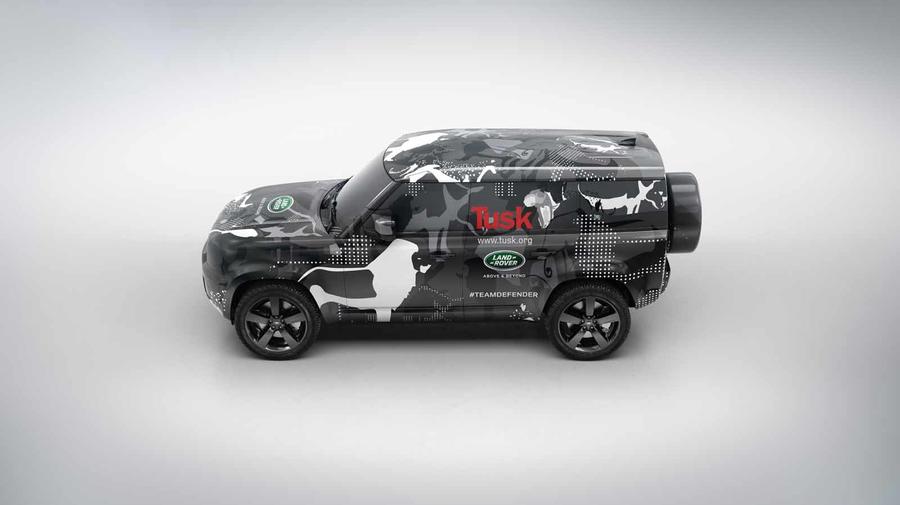
Land Rover has also confirmed for the first-time that, as expected, the new Defender will be built alongside the Discovery at Jaguar Land Rover’s new £1 billion manufacturing plant in Slovakia. That could prove somewhat controversial, given the Defender’s status as a proudly British machine, although Land Rover has noted that all the design and development work was undertaken at its Gaydon base.
The Defender has been sighted testing numerous times in recent months, including at the Nurburgring, where engineers were fine-tuning the chassis and brake setup to suit a variety of conditions.
Due to go into production early in 2020, the rugged 4×4 was also previously spotted testing in North America. Engineers were said to be subjecting the Toyota Land Cruiser rival to “rigorous test extremes”, including temperatures as low as minus 40deg Celcius and as high as 48 deg, as well as at altitudes up to 13,000ft.
The first official ‘spyshots’ of the five-door ‘110’ variant were followed last year by shots of the short-wheelbase three-door ’90’ model testing in disguise. An even longer-wheelbase ‘130’ version is rumoured, too.
A prototype has also been seen displaying a rear-mounted spare wheel. It’s not clear yet if that’s a feature that will make production, but it’s likely given the car’s off-road focus and the styling link to the old model.
Celebrating the Land Rover Defender
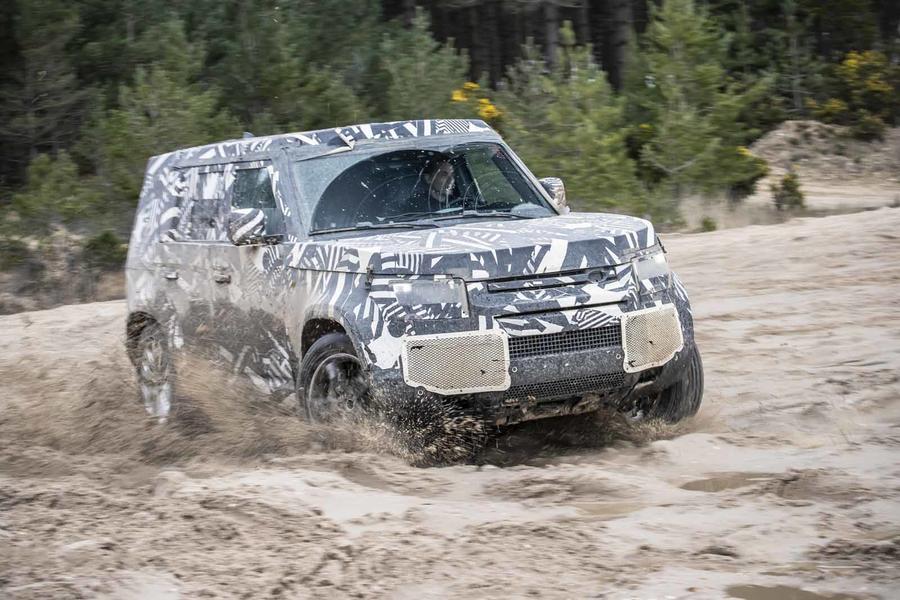
“These are what we call Pilot build cars and testing will increase on public roads from now,” said Bräutigam. “The first four cars are ready, and now the line is running you can expect the number of test cars to grow exponentially.
“In time, as you’d expect, the Defender will go through all the usual test routines, from cold weather testing in Arjeplog in Sweden to extreme hot weather testing in Death Valley in the USA. It’s exciting for us to be able to now be one step closer to bringing the car to market, of course. We are talking about the rebirth of an icon and not just as a single car, but as a whole family.
“Our brand is about passion, and it is icons that drive that passion. The truth is the world doesn’t need another premium brand doing what all the others do. These icons are what separate us; at Land Rover we are rooted in our heritage and that’s what makes us different.”
Bräutigam added that he felt the time taken between the Defender going off sale in 2016 and relaunching could be a positive for the new car, including the likelihood that it will be offered with electrified powertrains as well as petrol and diesel units.
“If we had wanted to recreate the existing car then we could have moved quicker, but it is our view that for an icon to remain an icon it cannot only look backwards, but must move forwards too. The new Defender will move the game on again, and having the benefit for some perspective in order to achieve that should be to our advantage.
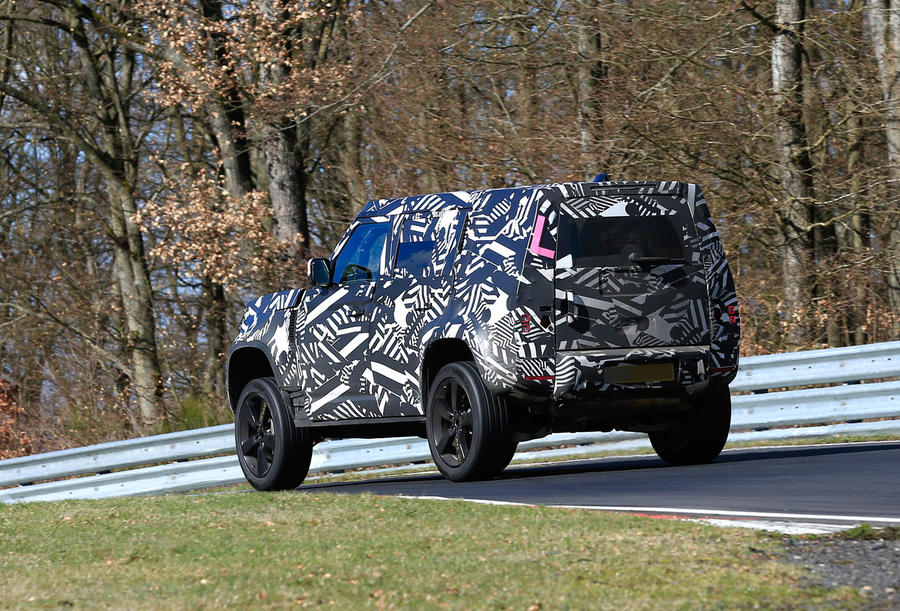
“The one thing I can promise you is that the new Defender will do all that our customers expect of it, without being a copycat of what has gone before. It is a car for the modern world, and that means that it must move the game on if it is to be relevant.”
According to the DVLA database, the vehicle registered with the numberplate seen in our spy shots is powered by a 2.0-litre diesel engine.
In one of the spy shots captured by our photographer, the window is wound down and a driver can be seen. It appears to be Nick Rogers, Jaguar Land Rover’s executive director of product engineering, although the firm refused to comment.
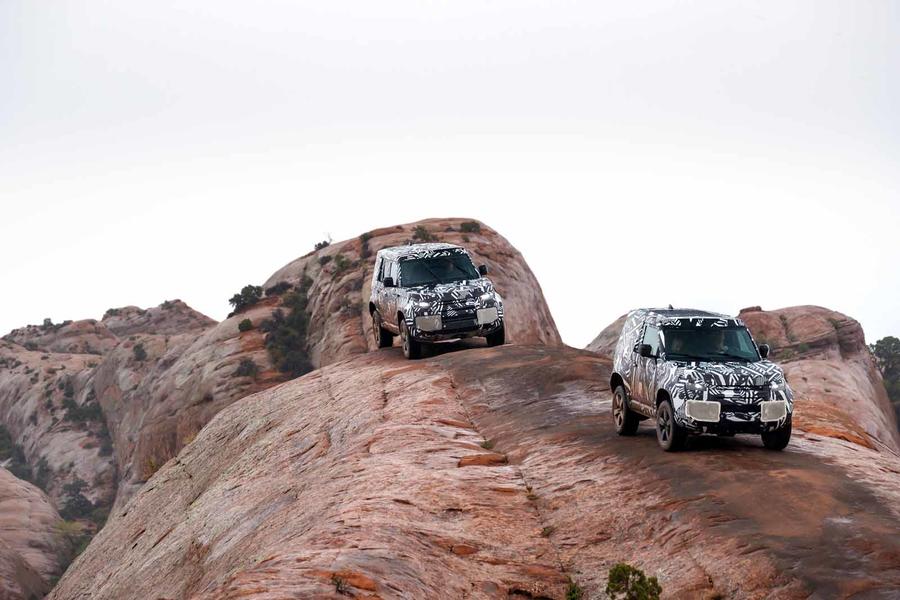
The reborn Defender is being developed in at least two forms: a short wheelbase 90-badged model, and a larger 110 version. Autocar has previously revealed that the two wheelbase sizes will allow the firm to develop a whole family of vehicles, ranging from basic, utilitarian machines up to luxurious high-end models.
With prototypes now having been seen on public roads, at the track and in extreme weather environments, test mules of the new Defender are likely to be a regular sight on public roads as Land Rover hones the vehicle. The aim for the new machine is to offer the “biggest breadth of capability of any model to wear the badge”, with prices tipped to range from over £45,000 to £70,000.
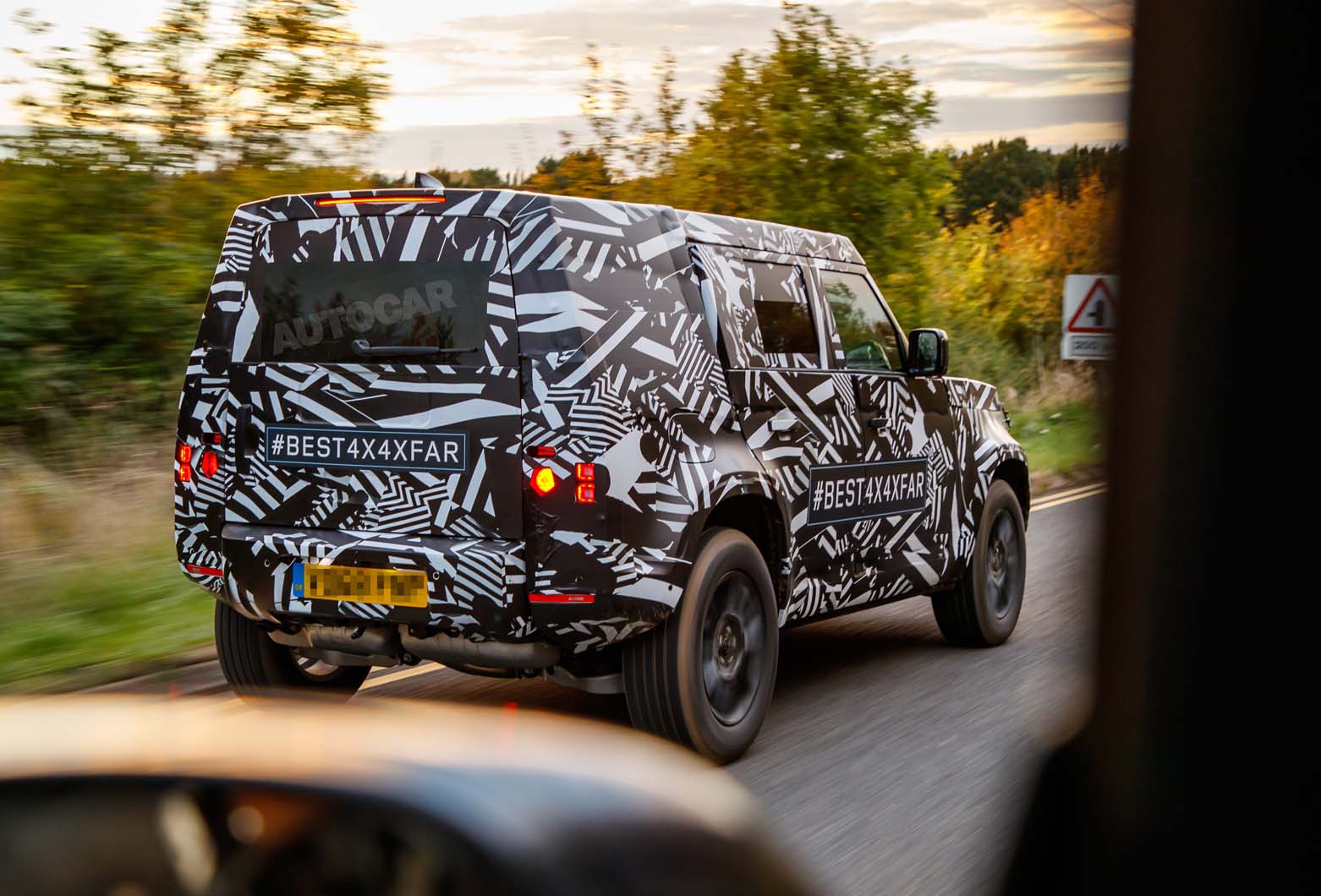
The previous Defender went out of production in January 2016, and the firm has been working since then to develop a successor.
The original Land Rover Series I, from which the Defender is derived, launched over 70 years ago in 1948.
Read more
New Land Rover Defender to expand into versatile family
James Ruppert on how to buy a used Defender
Land Rover Defender pick-up to rival Mercedes X-Class
Picture special: Land Rover at 70
Source: Autocar
